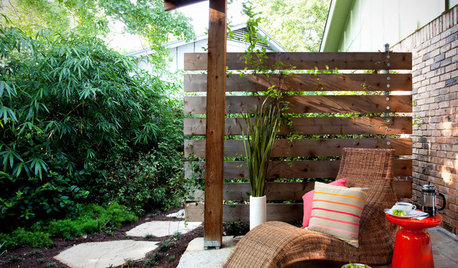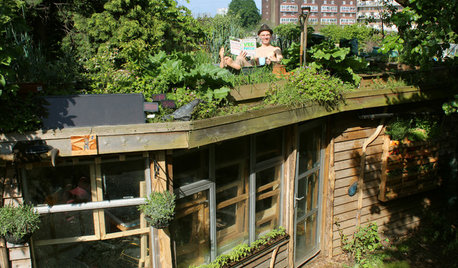Planning for next year's tomatoes
pattyokie
10 years ago
Related Stories

LANDSCAPE DESIGNThe Best Winter Garden Project? Plan for Next Year
Consider these 9 ideas now for a highly personal, truly enjoyable garden come spring
Full Story
EDIBLE GARDENSSummer Crops: How to Grow Tomatoes
Plant tomato seedlings in spring for one of the best tastes of summer, fresh from your backyard
Full Story
ARCHITECTUREHouzz Tour: Fresh Ideas in a Former Tomato Packing Shed
A formerly metal-clad structure is now a beautiful wood home designed to capture the light and preserve open space
Full Story
DECLUTTERINGYour Clutter-Clearing Plan for the New Year
Tackle these tasks month by month for a decluttering strategy that will really pay off
Full Story
LIFEKitchen Traditions: Tomato Season Meets a Family Legacy
Somewhere a Sicilian great-great-grandmother is smiling at a bowl of American-made sauce
Full Story
KITCHEN DESIGNGet Ideas From This Year’s Top 20 Kitchen Tours
Smart storage, functionality for cooks and families, vintage touches and lots of personality mark your favorites of 2015
Full Story
HOLIDAYSA Thanksgiving Tradition to Last the Whole Year
Looking for a thoughtful yet simple way to capture your family's gratitude? Grab a jar and paper
Full Story
FALL GARDENINGReflecting on a Gardening Year
Mistakes and successes, surprises and comforts. The garden helps us grow in new ways every year
Full Story
STUDIOS AND WORKSHOPSVisit London’s Shed of the Year
A modern Renaissance man carves out a multifunctional green oasis amid London’s urban whirl
Full Story
LIFE10 Beautifully Simple Ways to Go Greener in the New Year
You may just find more green in your wallet along the way
Full Story






Okiedawn OK Zone 7
pattyokieOriginal Author
Related Professionals
Elwood Landscape Architects & Landscape Designers · Manorville Landscape Architects & Landscape Designers · Berwyn Landscape Contractors · Eustis Landscape Contractors · Lemay Landscape Contractors · Lewisville Landscape Contractors · Milford Landscape Contractors · Pacifica Landscape Contractors · Paramus Landscape Contractors · Tamarac Landscape Contractors · Vermilion Landscape Contractors · Sun Valley Landscape Contractors · Oswego Decks, Patios & Outdoor Enclosures · Reading Decks, Patios & Outdoor Enclosures · Royal Oak Decks, Patios & Outdoor EnclosuresOkiedawn OK Zone 7